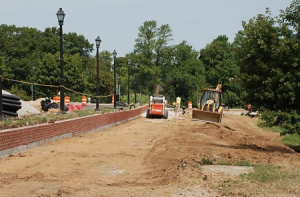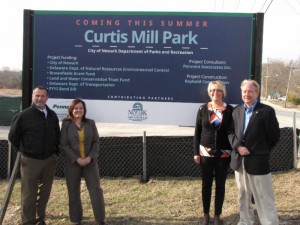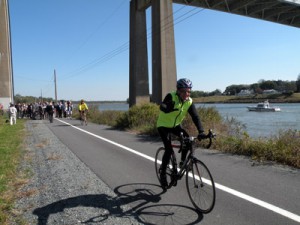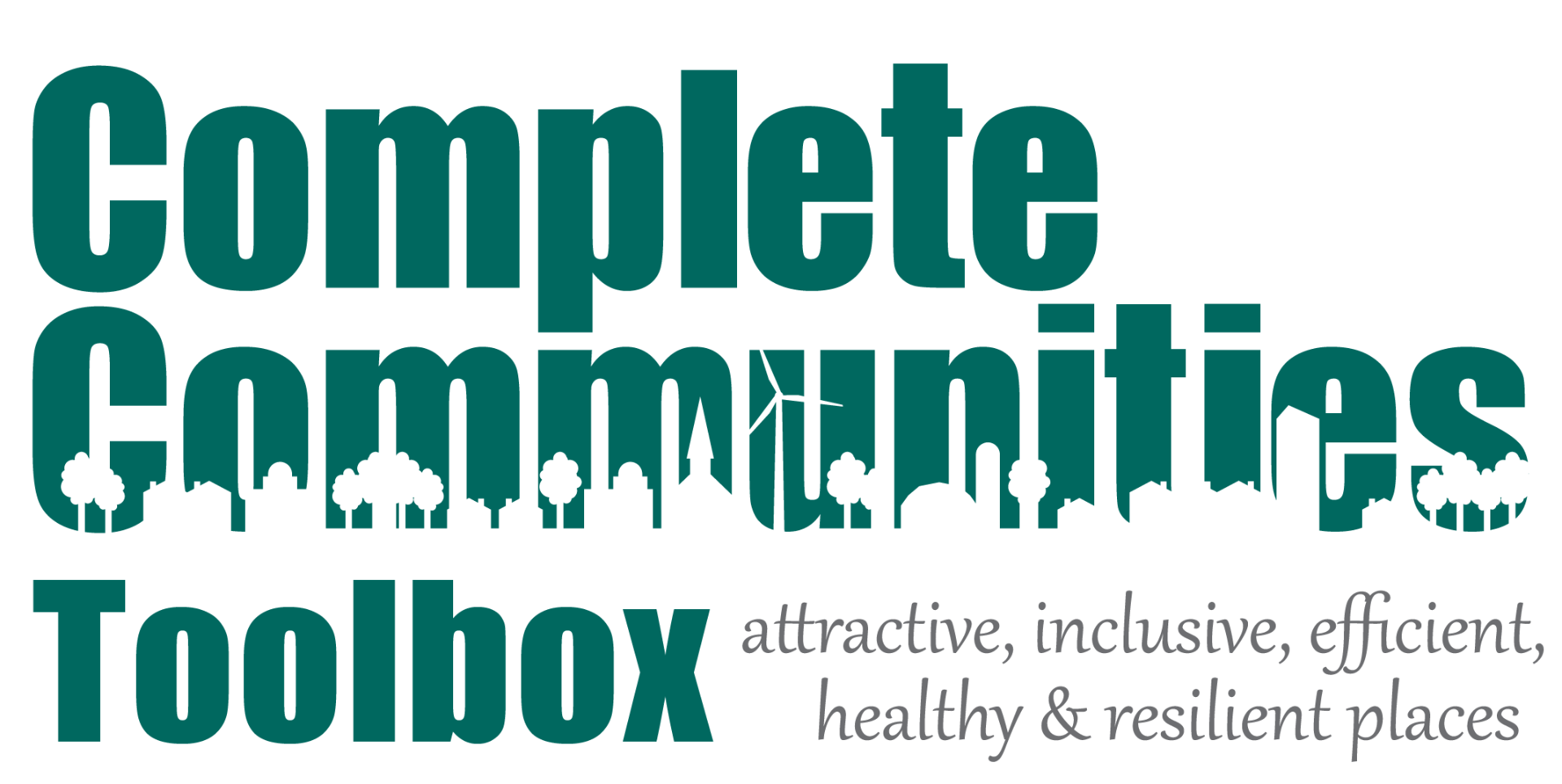Because parks and recreations projects may be a costly and a long-term endeavor, funds need to come from a variety of sources, including federal, state, and local government programs; institutional/ foundation support; and private partners. Local governments are using both traditional financing and innovative approaches to generate funds to support parks and recreation capital expenditures. Some of the financing techniques may raise funds, which can be used for a cash or in-kind match to leverage federal or state grant funding. IPA’s Healthy Communities: A Resource Guide for Delaware Municipalities provides detailed information on local funding strategies, some of which are highlighted below.

The Capital City Trail is under construction between Loockerman and Court Streets in Dover.
Bonds
Local governments can finance large capital recreation projects by seeking approval from citizens to approve debt financing through a bond referendum or vote. Bonds are most useful for long-term debt for large capital projects that are well planned and executed, such as the construction of greenways, trails, or recreation centers.
Capital Improvement Programs
A capital improvement program (CIP), or capital investment plan, is a plan for capital expenditures of a government to be incurred each year over a fixed period of future years. While policy guidelines vary, capital projects are generally expenditures for infrastructure, buildings and facilities, equipment, and land that are generally expensive (over a certain dollar amount), non-recurring, and have a useful life expectancy of more than one year. Large projects like park acquisition, trail construction, and other recreation projects that require borrowing of funds can often be included in a town’s CIP. Local government capital funds may be used as a match to apply for federal or state grants.
Dedication or “Fee-in-Lieu-Of”
As part of the land development process, a local government may require the developer to dedicate land to the municipality for public parks and recreation purposes. A local government may also give developers the option to instead pay a fee, or “fee-in-lieu-of dedication,” to be used for providing park facilities, construct recreation facilities, or privately reserve land for park and recreation purposes.
Delaware Land and Water Conservation Trust Fund
Delaware’s Land and Water Conservation Trust Fund (DTF) provides matching grants to local governments to fund the acquisition of open space and the development of outdoor recreation projects. The DTF Grant Program is administered by the Delaware Division of Parks and Recreation, Department of Natural Resources & Environmental Control. Legislation was passed in 2014 to change the structure and management of DTF and is expected to generate additional funding for outdoor recreation throughout the state. Senate Bill 75 will allow the management of the DTF as an endowment, which is expected to produce higher yields from the fund’s investments. The higher-yield investments will continue to be used to fund grants Delaware local government parkland acquisition and improvements to parks, trails, playgrounds and other active recreation facilities.

Project funding for the City of Newark’s Curtis Mill Park came from multiple sources including the City, DNREC, Brownfield Grant Fund, the Land and Water Conservation Trust Fund, DelDOT, and the State’s FY13 Bond Bill.
Federal Highway Administration (FHWA) National Scenic Byways Program
The U.S. Department of Transportation’s FHWA has the lead responsibility for the National Scenic Byways Program. Grants are made available to States to implement projects on highways designated as state scenic byways (and other roads. Funds are provided on a cost reimbursement basis and the he maximum Federal share is 80 percent.
Federal Transportation Alternatives Program
Established through federal legislation, Transportation Alternatives (TA) funds are designed to expand travel choice, strengthen the local economy, improve the quality of life, and protect the environment. The Transportation Alternatives program was established by Congress in 2012, and is funded through a proportional set-aside of the core Federal-aid Highway Program. Eligible activities include most activities historically funded as “Transportation Enhancements,” the Recreational Trails Program, and the Safe Routes to School programs.
First State Trails and Pathways Program
In June 2011, the Delaware General Assembly passed Senate Concurrent Resolution 13 requesting the study of the building and maintaining of non-motorized travel connections within and between communities, cities and towns in Delaware and to link these connections to form uninterrupted networks for walking and bicycling.
The First State Trails and Pathways Program builds upon past local, state, and federal investments in trails, pathways, riverwalks, and promenades. The initiative is designed to expand non-motorized travel opportunities, to expand the statewide network of trails and pathways, and make city-to-city linkage. At the request of then-governor Jacl Markell, the General Assembly allocated $7 million within the Fiscal Year 2012 Capital Improvements Budget (the Bond Bill) to begin this work. In Fiscal Year 2013, the Bond Bill allocated $13 million for trails and pathways. The Trails and Pathways Initiative is a partnership led by the DelDOT, DNREC, and partnerships among regional and local organizations and governments.

Part of the First State Trails and Pathways Initiative, the Michael Castle Trail spans 9 miles from the southern end of the Branch Canal west to the Summit Bridge.
Credit: American Trails.org
Walkable, Bikable Delaware Initiative
In the last several years, the Delaware General Assembly has committed a substantial amount of discretionary funding for DelDOT to make strategic investments in walking and bicycling. In May 2011, the Delaware General Assembly unanimously passed “Walkable, Bikeable Delaware.” Senate Concurrent Resolution 13 directed DelDOT to “create contiguous systems or networks of walkways and bikeways within and between cities and towns in Delaware in order to provide travelers with the opportunity for safe, convenient, cost-effective and healthy transportation via walking and bicycling. In June 2011, the Delaware General Assembly authorized $5 million in funding for state bike routes. In June 2012, the Delaware General Assembly unanimously approved a capital budget for the state of Delaware that included $13.25 million for walking and bicycling projects. Delaware’s FY15 capital budget bill (HB425) includes a new and substantial $6.3 million funding commitment toward walking and biking. It includes $3.6 million for “Bike and Pedestrian Improvements” for DelDOT that will likely fund the final phase of the 7-mile Wilmington-New Castle Greenway, including a bicycle and pedestrian bridge over the Christina River. In addition, $2.7 million has been allocated to DNREC for “Statewide Trails and Pathways,” and is expected to fund construction of the Assawoman Canal Trail in Bethany Beach.
User Fees
Most parks and recreation departments establish user fees in an effort to recover program costs through recreation revenues. The jurisdiction should establish a recreation program fee policy to ensure that charges that are fair and equitable for the use of facilities, equipment, and participation in programs. Some jurisdictions offer fee incentives for municipal residents or a system of reduced rates to special-needs residents.
Back to City of Lewes

